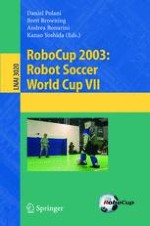2004 | Buch
RoboCup 2003: Robot Soccer World Cup VII
herausgegeben von: Daniel Polani, Brett Browning, Andrea Bonarini, Kazuo Yoshida
Verlag: Springer Berlin Heidelberg
Buchreihe : Lecture Notes in Computer Science
Enthalten in: Professional Book Archive
